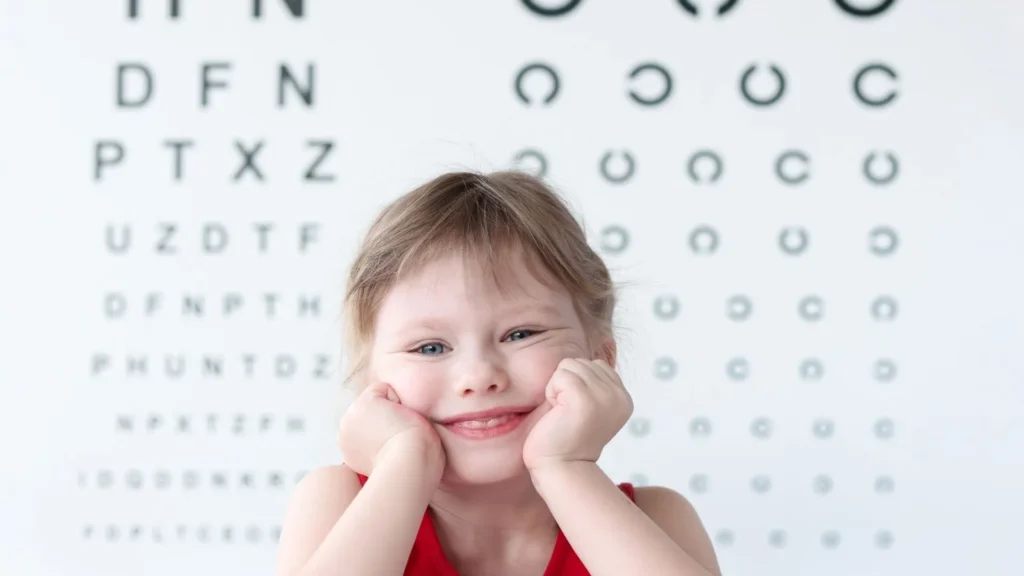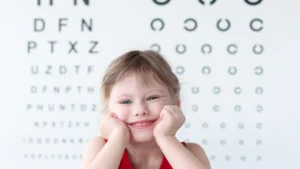Your eyes are equipped with a natural, crystalline lens that’s responsible for focusing light into the back of the eye (retina). When focused correctly, the light gets converted into an electrical signal that travels to the brain via the optic nerve – this is how vision is supposed to work.
In the presence of a cataract, the crystalline lens is cloudy and light isn’t refracted into the retina properly. This is generally due to the breakdown of proteins and fibers in the eye lens. Clouded vision is a lot like looking through a foggy window or frosted glass, which can be troublesome.
Cataracts are most common in older individuals. In fact, nearly half the American population will develop a cataract in at least one eye by the time they turn 75 years old. It’s a normal part of the aging process, but that doesn’t necessarily mean cataracts are exclusive to older individuals.
So, can you develop a cataract at an early age?
We know that cataracts are likely a part of everyone’s future as we grow older, but that doesn’t mean it can’t be part of your present – no matter what age you are. Cataracts can develop at any age and aren’t going to discriminate against anyone, though it is more common in elders.
Those that develop cataracts before the age of 45 years old have what’s known as early-onset cataracts. Children can also experience cataracts, which are known as pediatric cataracts, and can be further broken down into either congenital cataracts or acquired cataracts.
We know we just threw a lot of words at you, but don’t worry. We’re going to take a closer look at early onset cataracts, pediatric cataracts, congenital cataracts, and acquired cataracts. We’ll discuss what they are, what they’re caused by, common symptoms, and potential treatments.
Pediatric Cataracts
Cataracts that occur in children are called pediatric cataracts. While cataracts are most common in older adults, studies indicate that between 1 to 15 per 10,000 children will experience pediatric cataracts in their childhood. If not treated properly, it can cause permanent vision loss.
Common causes of cataracts in children include genetic abnormalities, infections during pregnancy, diabetes, eye trauma or injury, galactosemia, and toxocariasis. Depending on the cause, it’ll either be considered congenital cataracts or acquired cataracts – more on that below.
Congenital Cataracts
Congenital cataracts are cataracts that children are born with. The two most common causes of congenital cataracts are genetics (metabolic, hormonal, or chromosomal abnormalities) and hereditary (one or both of the parents had it in childhood). Down syndrome is a possible cause.
Some studies estimate that 1 in every 5 people with congenital cataracts will one day pass it down to their children. Since these genetic or hereditary abnormalities prevent the lens from developing properly, the child will experience cloudy vision from the moment they’re born.
Acquired Cataracts
Acquired cataracts, also known as juvenile or infantile cataracts, are cataracts that children acquire after they’re born – but still in their childhood or teenage years. Some common causes of acquired cataracts are eye injuries, galactosemia, toxocariasis, and even diabetes.
Not only that, but acquired cataracts can be a result of steroid use, complications with other eye conditions, radiation therapy (cancer patients), and complications with treatment from other childhood diseases. Over time, proteins in the lens break down, clump up, and cloud over.
Early Onset Cataracts
Early-onset cataracts are cataracts that occur before the age of 45, but not necessarily in childhood. The symptoms and eventual treatment of early-onset cataracts are usually the same as any other cataract patient, but the condition isn’t caused by the natural aging process.
Instead, early onset cataracts are usually caused by eye trauma or eye injury, side effects from medication, excessive exposure to UV rays or radiation, smoking, obesity, diabetes, and even glaucoma. Some people might suffer from more than one cause of early-onset cataracts.
Warning Signs & Symptoms of Cataracts
Understanding the warning signs and symptoms of cataracts is essential to detect the disease in its earliest stages. As you can likely imagine, this plays an important role in the diagnosis and overall treatment of the condition – helping you preserve your vision long-term.
Let’s take a look at some of the most common symptoms of cataracts:
- Cloudy vision, distorted vision, or blurry vision
- Glare or halos when looking at lights
- Light sensitivity
- Difficulty seeing at night
- Double vision or seeing double
- Colors start to fade
As far as children are concerned, they generally start becoming observative and interested in their surroundings by 3 or 4 months old. If you feel your child isn’t responding to certain motions or seeing properly, don’t hesitate to seek professional help – even if there’s nothing wrong.
Diagnosing & Treating Cataracts
If you notice any cataract symptoms in your child, schedule an eye exam with your local ophthalmologist immediately. They have the tools and experience necessary when detecting, diagnosing, and treating cataracts – whether it’s age-related, pediatric, or early-onset cataracts.
The most common, safe, and effective treatment for cataracts is cataract surgery. This involves replacing your eye’s natural lens with an artificial lens, also known as an intraocular lens (IOL). If the cataracts are present at birth, it’s likely that the surgery will happen as soon as possible.
With acquired cataracts, surgery will largely depend on how the condition affects the child’s vision. Eyeglasses might be able to help delay the need for immediate surgery, but surgery is almost always needed at some point. The good news is it has a success rate of about 99%.
Contact Milwaukee Eye Surgeons Today!
Cataracts can make it extremely difficult to see and while it’s a normal occurrence as we grow older, it’s much less common and much more concerning when found in children or teenagers. With early detection, a swift diagnosis, and proper treatment from your eye doctor, your child can find relief.
If you believe your child is suffering from cataracts or they’re at an increased risk of developing cataracts, don’t hesitate to contact Milwaukee Eye Surgeons today. To ensure your child’s eyes remain healthy, make sure you’re scheduling an annual eye exam so we can safely monitor their eye health long-term. Contact us today!








